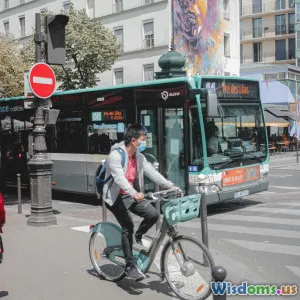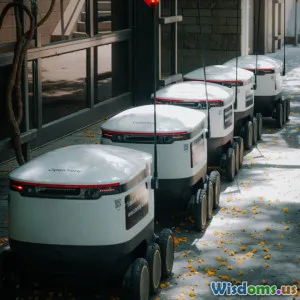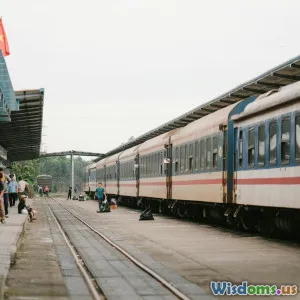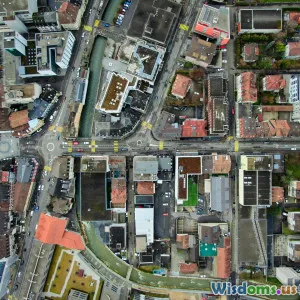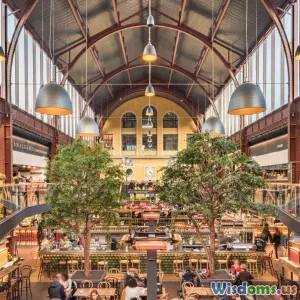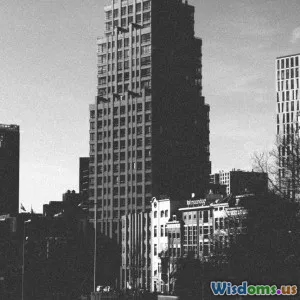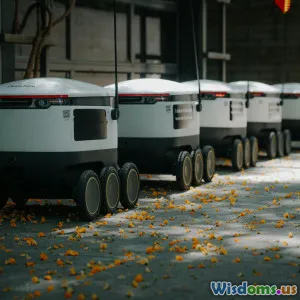
The Future of Transportation in Smart Cities
8 min read Explore how smart cities are redefining transportation with innovative, sustainable urban mobility solutions shaping our future. (0 Reviews)
The Future of Transportation in Smart Cities
Transportation is the lifeblood of any city, dictating its efficiency, environmental impact, and the quality of life of its inhabitants. As urban populations swell and environmental concerns become critical, smart cities worldwide are pioneering innovative approaches to revamp their transportation ecosystems. These systems are no longer static infrastructures but dynamic networks seamlessly interwoven with technology, urban design, and sustainability objectives. This article delves into how the future of transportation in smart cities is being shaped by these transformative trends, offering both exciting advancements and grounded solutions.
Introduction: Rethinking Urban Mobility in the Smart Age
Imagine a city where commuting is hassle-free, pollution is minimized, and every mode of transportation is intelligently coordinated to ensure speed, safety, and sustainability. This vision is rapidly transitioning from concept to reality thanks to the fusion of data analytics, sensor-driven infrastructure, electrification, and real-time communication technologies.
Smart cities harness these digital innovations to create integrated transportation models that are responsive and adaptable. They address urban challenges — traffic congestion, emissions, parking scarcity, and accessibility — through forward-thinking architecture and urban planning that harmonizes with advanced transportation technology.
"Progress in smart city transportation hinges on holistic integration, not isolated technological fixes," says Dr. Maria Torres, Urban Mobility Expert at the Institute of Future Cities. "The key is designing infrastructure that evolves fluidly with citizens' needs and environmental imperatives."
Smart Infrastructure: The Backbone of Future Transportation
Intelligent Traffic Management
Smart traffic lights equipped with AI analyze vehicle flow, pedestrian presence, and even weather conditions in real time to optimize signal phases and reduce idling time. The city of Barcelona, for example, has implemented such systems resulting in a reported 25% reduction in traffic congestion within key corridors.
Sensor-Embedded Roads and Pavements
Embedment of IoT devices within roadways monitors wear and tear, detects hazards, and supports connected vehicles (CVs) by transmitting real-time route information. Singapore’s smart road pilot projects use embedded sensors to reroute traffic efficiently and schedule timely infrastructure maintenance.
Electrification of Transportation Networks
Smart cities are embracing electric vehicle (EV) infrastructure, with urban planners integrating charging stations effortlessly within streetscapes and parking architectures. Amsterdam’s urban design consciously incorporates designated EV parking with rapid chargers, supporting its ambitious target to be carbon-neutral by 2040.
Multi-modal Integration: Seamlessly Connecting Urban Mobility Modes
An interconnected system amalgamating public transit, shared mobility services, walking, and cycling will define the future of urban transportation.
Mobility-as-a-Service (MaaS)
MaaS platforms unify diverse transportation modes into a single accessible interface with unified payment options. Helsinki’s Whim app enables users to plan trips using buses, trains, taxis, bike shares, and car rentals under a single subscription model, making mobility frictionless.
Smart Transit Hubs
State-of-the-art terminals aggregate buses, metro systems, and bike share stations, serving as nodes for easy transfers. These hubs incorporate real-time information displays, charging areas for EVs and e-bikes, and integrated ticketing, dramatically cutting transfer times and boosting convenience.
Prioritizing Non-Motorized Transport
Urban design in smart cities augments pedestrian and cyclist infrastructure with dedicated lanes, green corridors, and smart lighting. Paris, through its extensive Velib bike-sharing program, has improved urban health and cut emissions while inspiring safe cycling culture supported by robust infrastructure.
Autonomous and Connected Vehicles: Revolutionizing Personal and Public Transit
Autonomous Vehicles (AVs)
Driverless electric shuttles and taxis are emerging in smart cities like Singapore and Dubai, where pilot programs illustrate increased safety and efficiency. AVs can reduce accidents caused by human error while optimizing road use through platooning and smooth traffic exploitation.
Connected Vehicle Ecosystems
Vehicles communicating with city infrastructure and each other enable synchronized traffic flow. The U.S. Department of Transportation emphasizes connected vehicle technology as a cornerstone to preventing up to 80% of traffic incidents.
Impact on Urban Design
AV adoption collapses parking demand since many will operate as ride-sharers roaming continuously. Urban planners can reclaim prime real estate formerly used for parking, reallocating it to parks, pedestrian zones, and mixed-use developments.
Sustainability at the Core: Green Transportation Solutions
Electric Public and Micro-Mobility Fleet
Cities like Copenhagen and Vancouver boast large-scale deployment of electric buses, scooters, and bikes, significantly reducing carbon footprints.
Urban Logistics and Freight Innovation
Last-mile delivery systems are moving towards cargo bikes and electric vans, reducing heavy truck presence downtown. Madrid’s smart urban logistics program achieves a 30% emission cut via such innovations.
Energy-Positive Transit Stations
Futuristic transit hubs are designed using solar panels and energy-harvesting flooring to produce more energy than they consume, embedding sustainability into infrastructure design.
Challenges and Considerations
Despite technological promise, smart city transportation faces obstacles:
- Data Security and Privacy: Constant data collection necessitates robust safeguards to protect citizens.
- Equity and Inclusion: Smart systems must be accessible to all populations, including underserved communities.
- Interdisciplinary Coordination: Effective implementation requires collaboration between governments, tech providers, and urban designers.
Solving these will ensure that the smart city transitions enhance quality of urban life universally.
Conclusion: The Road Ahead for Smart City Transportation
The future of transportation in smart cities is not merely about futuristic technologies but thoughtful integration balancing innovation with equity and environmental stewardship. Cities that invest in intelligent infrastructure, embrace multimodal connectivity, and prioritize sustainability will transform mobility from a challenge into a cornerstone for thriving urban life.
By envisioning and enacting transport systems attuned to human and ecological needs, smart cities can lead the world toward more livable, resilient, and vibrant urban environments where movement is a seamless, safe, and sustainable experience.
"Transportation is the keystone for sustaining smart city ecosystems," Dr. Torres emphasizes. "Its future lies in designing with foresight, inclusivity, and a relentless commitment to the planet."
Harnessing these futuristic strategies today will ignite the smart city revolution shaping our global metropolises tomorrow.
Rate the Post
User Reviews
Popular Posts












